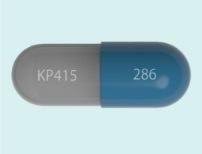Azithromycin is a commonly prescribed antibiotic that targets the bacteria protein inner machineries for killing and stopping its growth. This macrolide antibiotic binds to the 50S ribosomal subunit of susceptible bacteria and interferes with protein synthesis by impeding transpeptidation. This prevents the translation of vital proteins that are necessary for bacterial survival and reproduction. Research has found it can reach peak plasma concentrations in just 2-3 hours with a single-dose of 500 mg, which makes what is azithromycin used for an effective fast treatment for various upper and lower respiratory infections including skin and sexually transmitted diseases.
One of the big reasons azithromycin is so good for STIs like chlamydia, gonorrhea and uncomplicated cases of syphilis is its long half-life -- roughly 68 hours on average. It has an extended half-life, which gives rise to shorter treatment courses than with other antibiotics. Typically, patients take 500 mg on day one and then 250 mg each day for the next four days. By dosing once daily, both amoxicillin and clavulanate are taken at the same time which is an improvement in patient compliance; therefore, it decreases missed doses and incomplete treatments potentially associated with promoting antibiotic resistance.
Broad spectrum activity: what is azithromycin used for covers many Gram-positive, some Gram-negative, and atypical bacteria home-issues issue-archive library-tell-me-more library tell me more-threatening microorganisms. It is especially active against pathogens including Streptococcus pneumoniae, Haemophilus influenzae, and Mycoplasma pneumoniae that are frequent causes of community-acquired pneumonias. Azithromycin was used as a monotherapy and demonstrated effectiveness with a cure rate of 90%, which is still high for pneumonia in clinical trials. Its tissue-penetration power and intracellular depth constitute an excellent antibiotic in the lungs and sinuses.

Other than these, the pharmacokinetic properties of this drug also help in effectively treating bacterial infections. It can collect inside white blood cells and be carried directly to the site of infection, where it is then released over time. This localized delivery also decreases systemic exposure and side effects while allowing a high concentration of drug deposition in the area requiring treatment. For instance — with the notice given earlier, for chlamydia, you can achieve >95% cure rates via a single one-gram dose – this not only simplifies treatment but also reduces instances of non-adherence.
Because of its anti-inflammatory characteristics, what is azithromycin used for also offers advantages that are complementary to its antimicrobial properties and could be essential specifically in the main treatment of respiratory infections. Studies in The Lancet emphasize its decrease in cytokine production, which could help allergies, COPD exacerbations, and bronchitis symptoms. Azithromycin kills the causative organism, thus directly affecting hemorrhage while reducing inflammation, which limits a patient's recovery.
But azithromycin is not risk-free, either. The FDA has issued warnings about the risk for QT interval prolongation with azithromycin, which may result in arrhythmias in susceptible patients. The rate of this varies by population, but is somewhere in the order of 1:100,000 treatments overall—more commonly in patients with other cardiac comorbidities or who are on additional QT-causing medications. These side effects can be avoided by close patient monitoring and careful selection of patients; however, this does allow azithromycin to retain a primary treatment option against a range of bacterial infections.
An appreciation of the antibacterial action against a wide variety of pathogens, once-daily dosing simplicity, and anti-inflammatory properties all contribute to our understanding what is azithromycin used for. They all together make it a broad-spectrum antibiotic that is effective in various bacterial infections.